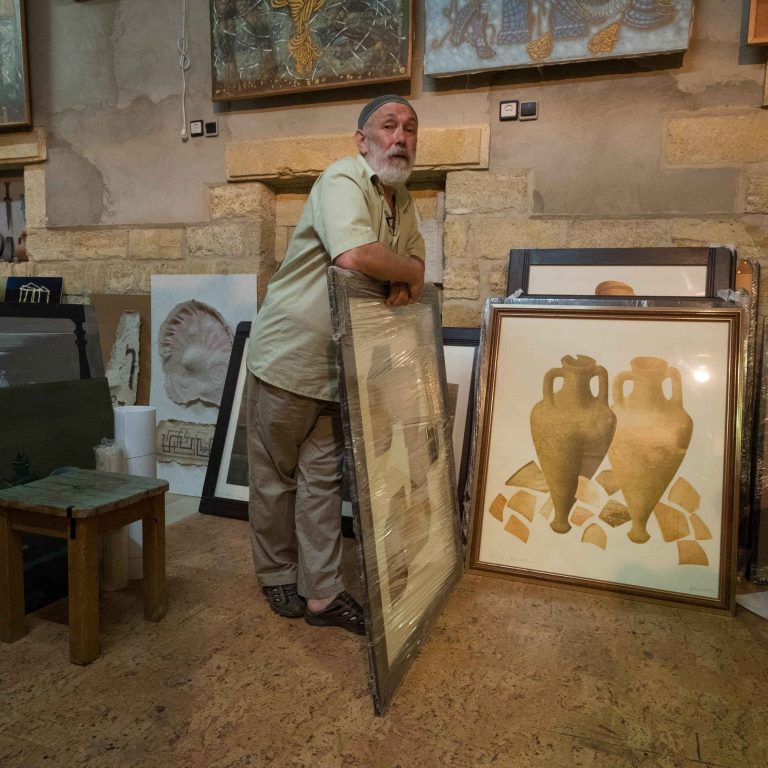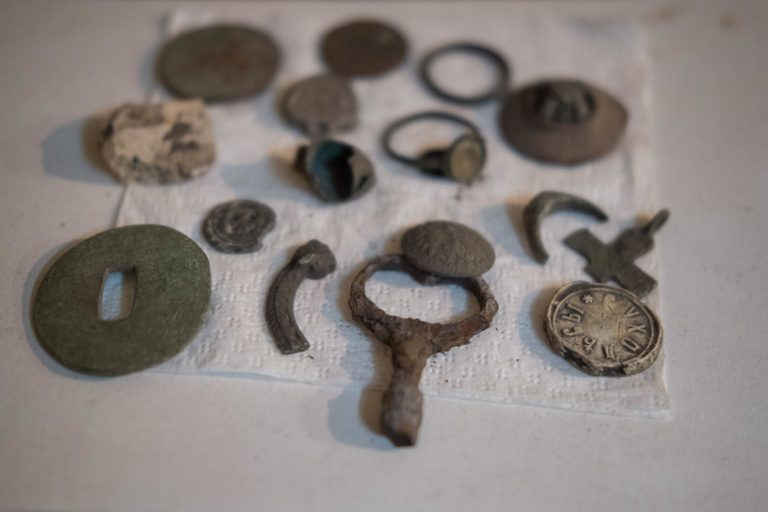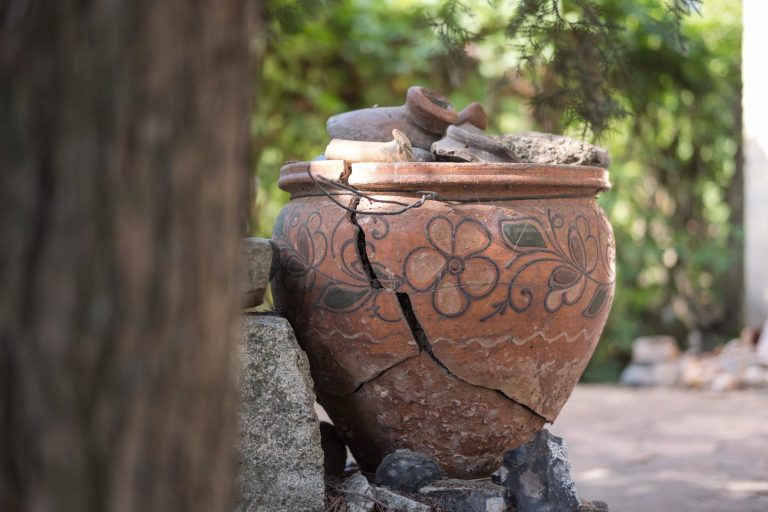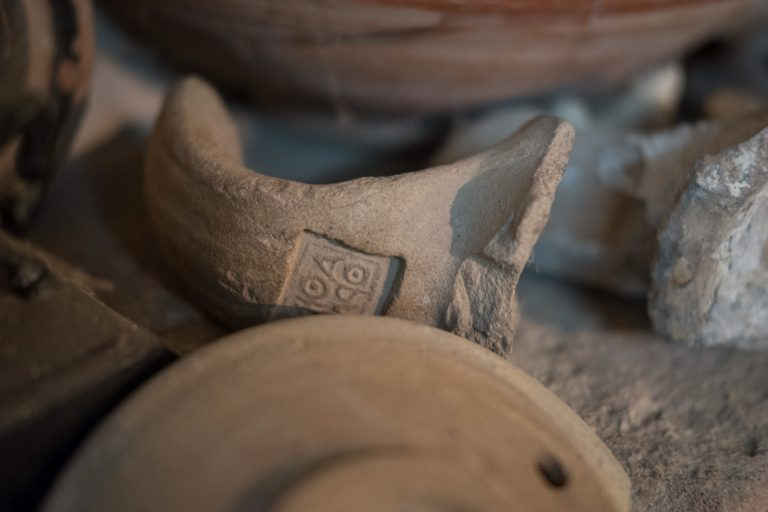More than twenty-five years ago, a family of artists, Volodymyr Bakhtov and Tetiana Bakhtova, moved from Luhansk to the village of Parutyne, near Olbia — a national historic archaeological preserve of an ancient Greek settlement. In their own backyard, they decided to recreate the lifestyle of the Mediterranean people. The Bakhtov family renamed the street where they settled to Herodotus Street and they also drew attention to Olbia with their own performances.
Volodymyr and Tetiana have been living in the village near the National Historic and Archaeological Reserve of Olbia for over twenty five years. Today, their home is a modern heart for the ancient town’s spirit. It all began in the 80’s, when Volodymyr took part in an expedition. It was then that his expedition team built a copy of the ancient Greek bireme (an ancient sailing galley) in Odesa and set sail in it. They passed Greece, Italy, and then moved across the French rivers into the ocean. There Volodymyr descended on the Elbe Island, where Napoleon had once served his exile sentence.
Soon Tetiana joined him. The couple liked the Mediterranean way of living, its spirit and freedom, so they became even more engaged in the studies of ancient cultures. They had lived on the Kinburn Spit (on the Kinburn Peninsula near Mykolaiv, Ukraine) for nearly fifteen years before that. Later Tetiana showed the village of Parutyne to Volodymyr, as she had been there at the archaeological excavations of Olbia:
— We had a history teacher who came to us at the end of May and said: who wants to go to an archaeological excavation site and who wants to go to a kolgosp (Soviet collective farm).
According to Tetiana, Volodymyr Immediately fell in love with the area. In Parutyne he recognized an inexhaustible source of ideas for creativity so he decided to settle there:
— When I got here, I realized that I had to stay here and dig deep.
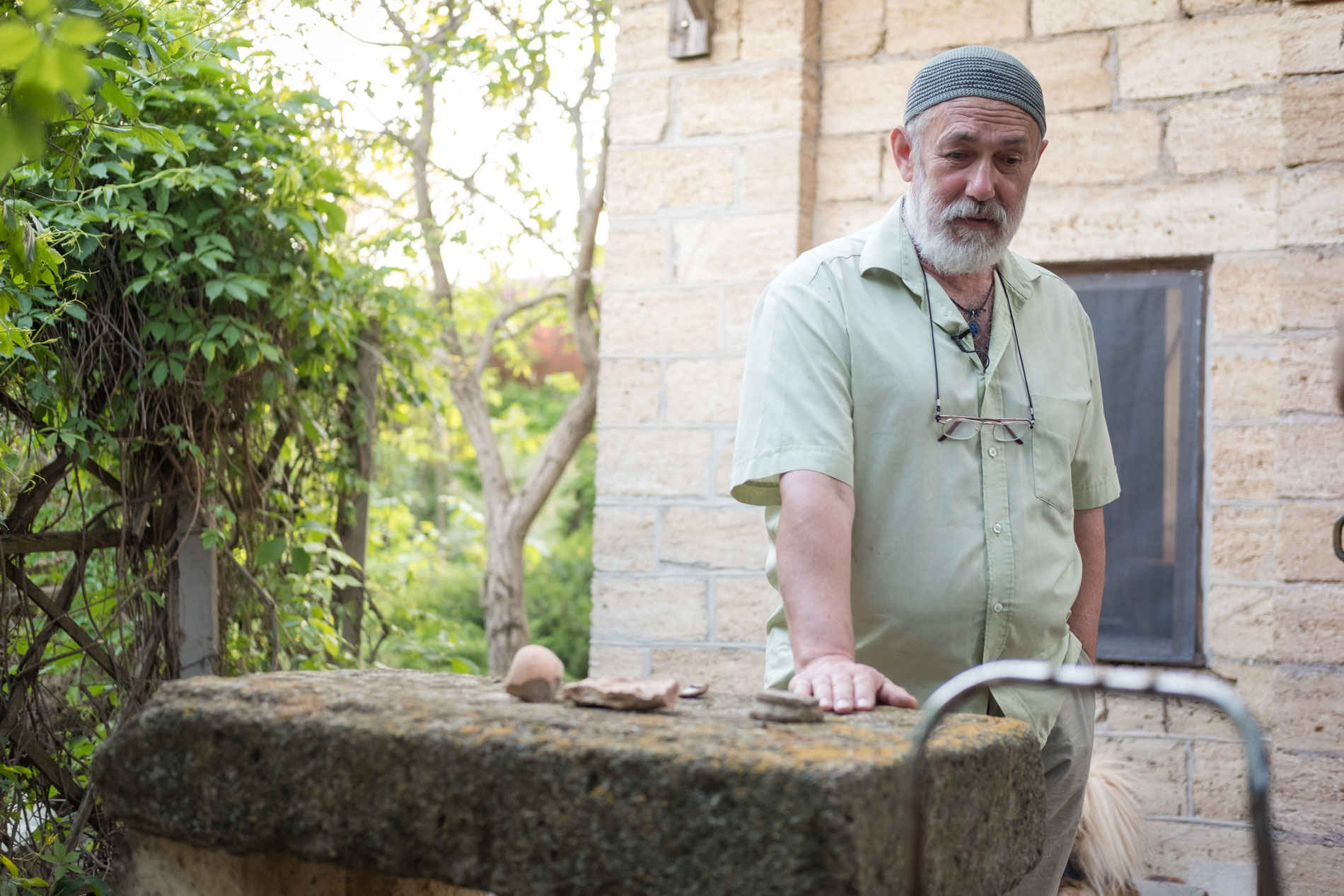
Volodymyr says that they arrived at the very age when it was possible to work actively. Volodymyr recalls the energy and exaltation that filled him and his wife after Ukraine’s independence declaration of 1991. They believed in the active development of the country, so they began to build their home here, considering art residences and many other ideas.
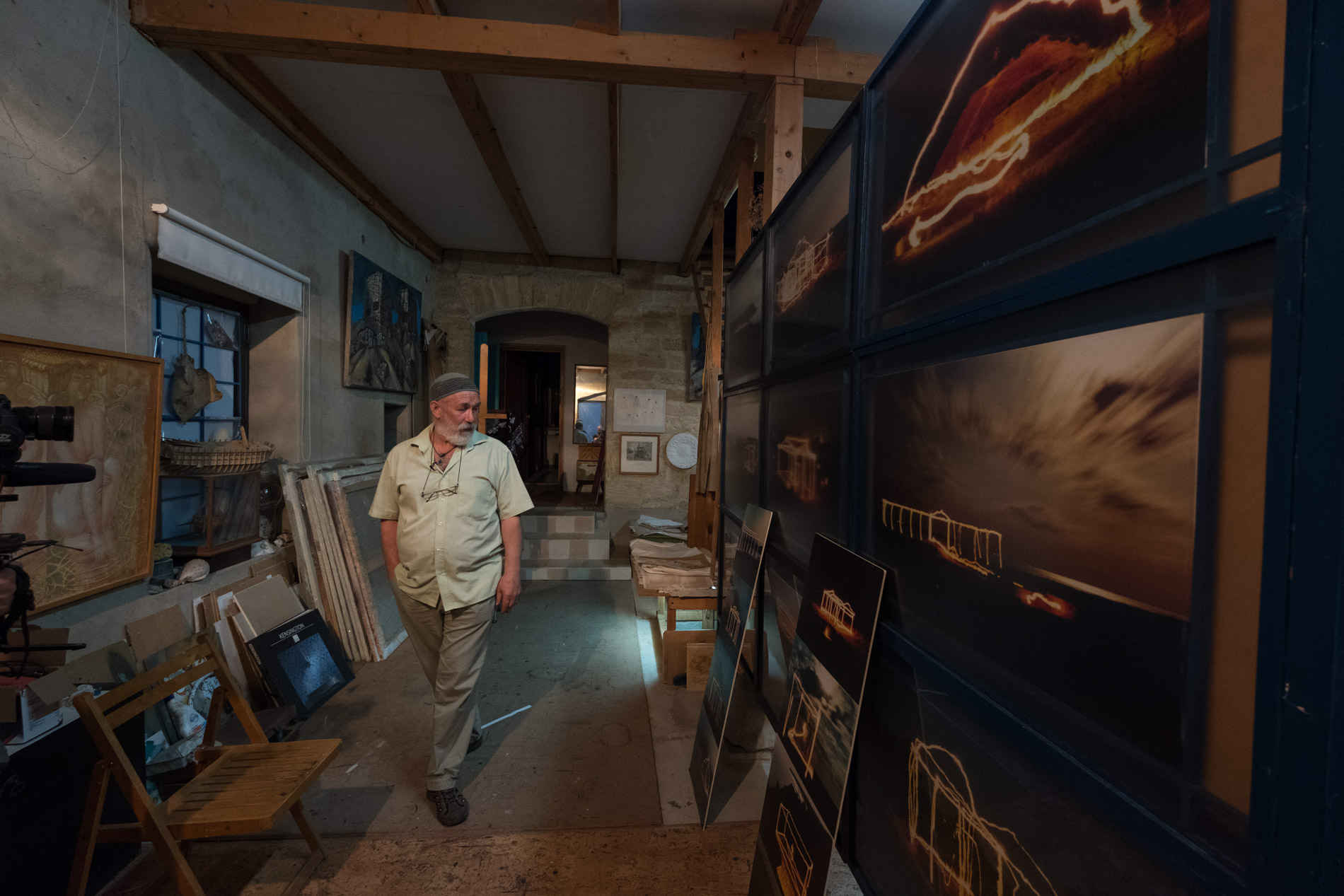
A dwelling on ancient ruins
The artists’ house is a two-storey building, surrounded by a park and a stone fence. Volodymyr says that he has been building it for almost all his life, since the age of forty. Located on Herodotus Street, it is like an oikos — an ancient Greek farm — carried over to the 21st century. However, originally the site was no different from any other in the village:
— When we bought this place, the only things here were a half-buried hut in the ground and some gardens. As you can see our countryside — potatoes, scorching heat…
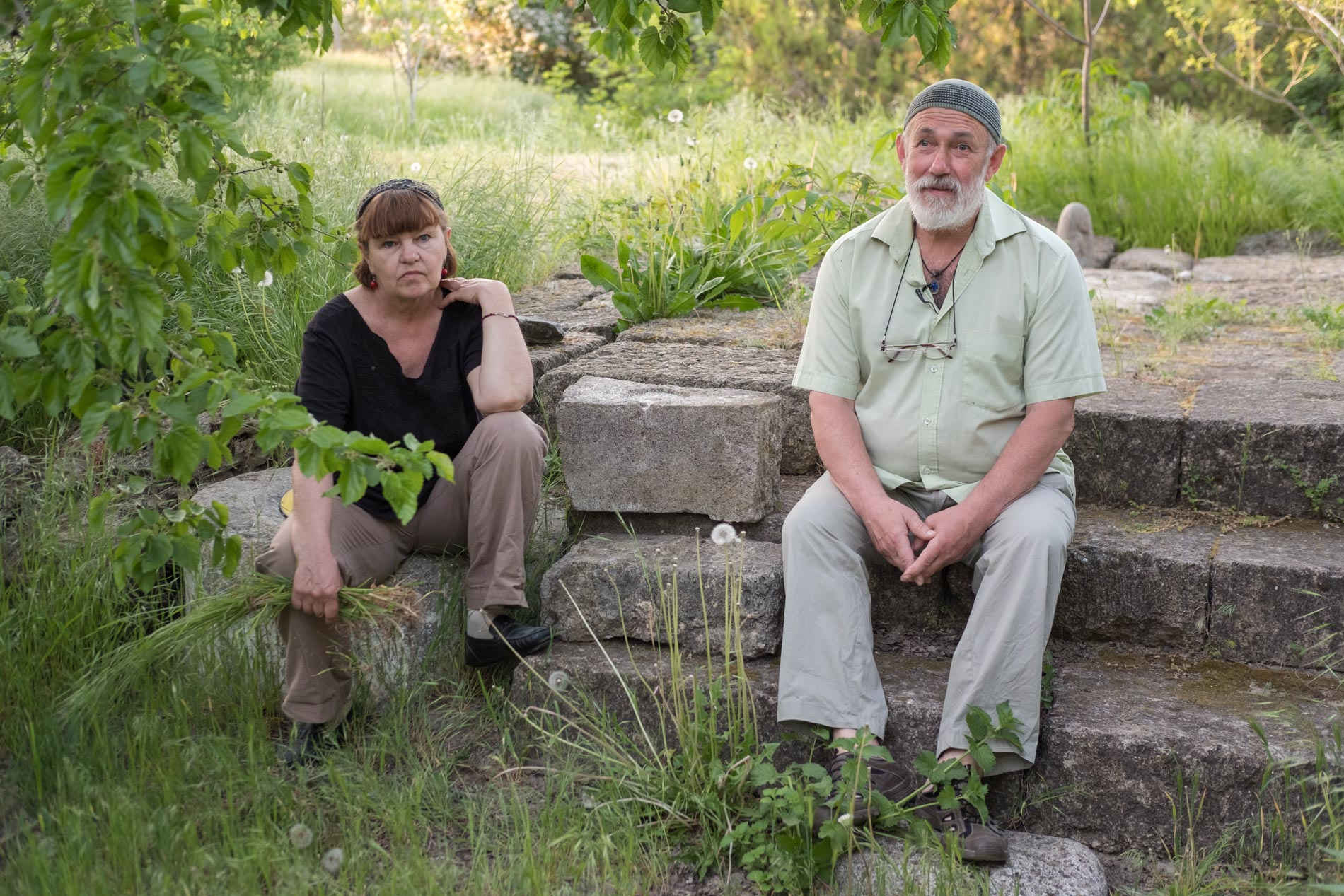
At first, they built a stone fence, because the ancient Olbian road went through their area and was actively used by the locals to pass. Stones for fencing and housing were taken in the Olbian quarry, where limestone and shellfish were brought to from the Mediterranean and Marmara Seas. Volodymyr said that not only the village, but also the Ochakiv fortress were built from the Olbian stones:
— Olbia was exploited for many centuries as a quarry for building materials. It’s a shame.
The footpaths on the Bakhtov’s site are paved with shards of Olbian pottery and buildings that retain echoes of history. Volodymyr recounts that he once used smithereens of antique roof tile and amphorae for his major projects in Lviv, Odesa and Kyiv. He says, if you remove the tile fragments, you can see the traces of dogs or goats walking on the raw clay, and somewhere you can even come across a baby’s footprint.
slideshow
According to Volodymyr, the remnants of ancient civilization can be easily found in Parutyne itself. He tells a story that when a bulldozer passed the territory and removed the top soil layer, large round-shaped fragments of land started to fall down. It looked like ancient wells or burial places, but the couple did not check it. Amphorae, ancient Greek coins, stone and ruins of buildings are still being discovered in the village. Some locals even use the amphora as a washbasin.
An antique material collected by Volodymyr in the village has been used to build a ‘ritual site’ in their home. The artist shows several ‘newcomers’, for example, from Bakhchysarai, and his wife presents the Olbian stones from ancient Greek burial sites, altars and mounds, which, as she states, were found under an old mazanka (traditional Ukrainian hut made of clay and straw):
— When we have disassembled it, there were stones with a rotary device, where the wooden piece was installed, and the door was spinning.
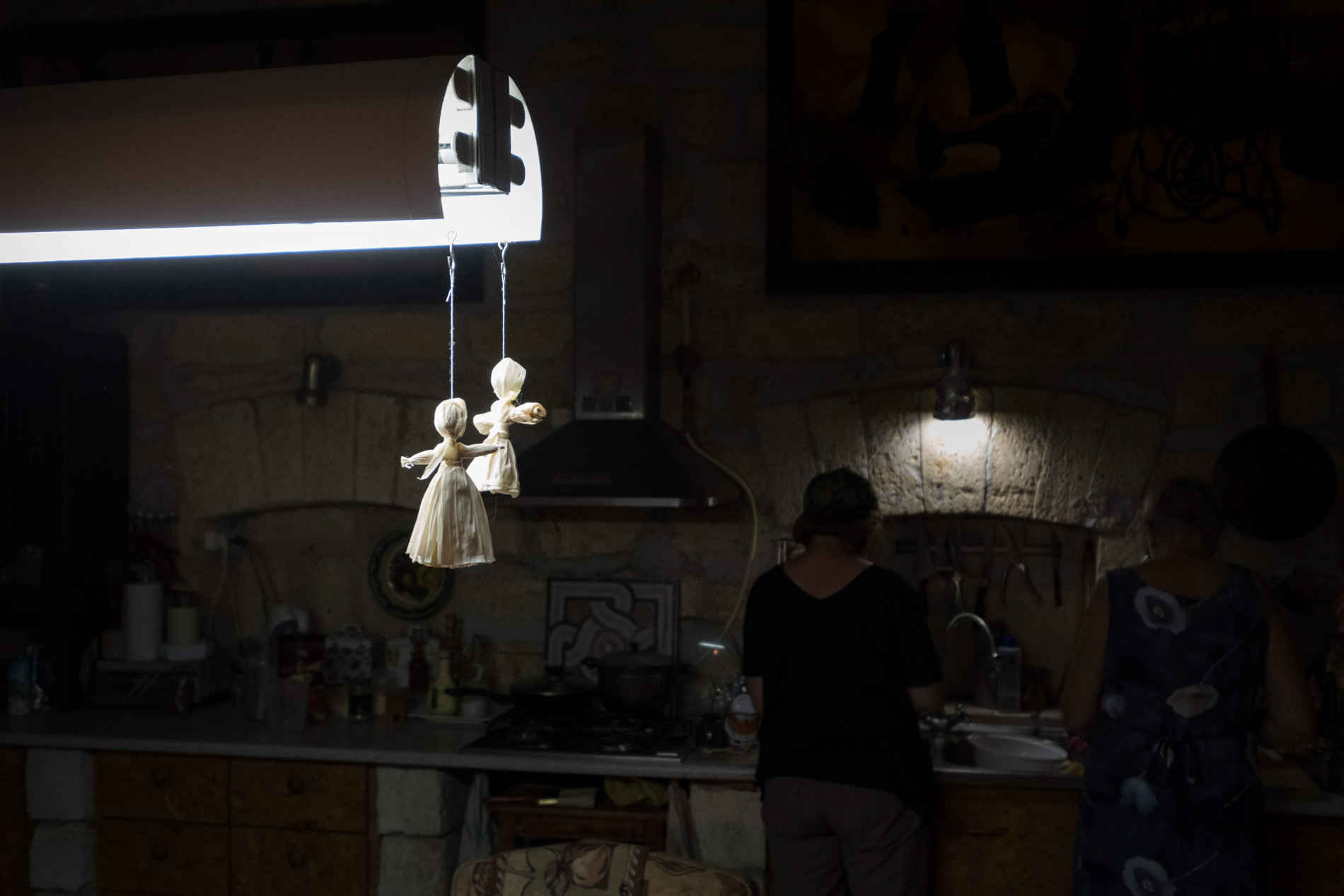
The Bakhtov spouses recall that once their home altar was a site for poetry slam. There was a mysterious atmosphere here, so the place was inspired the spoken word artists:
— Poets gathered from all over Ukraine and even abroad. Part of the competition was held in Mykolaiv, and the festival’s final was held here, at night. Very romantic.
In addition to the authentic altar, there is a facility in Bakhtov’s house that used to serve as a dining place. The Romans and Greeks called it triclinia, and the Oriental nations — dastarkhān. Now it looks like a small wooden alcove with soft seats. On such sofas, ancient people slowly chatted enjoying food and wine. Along with dastarkhān there is a real pizza oven, from where, according to Volodymyr, the house began. The artist recounts that he had built his first oven during a Mediterranean expedition, where he learned how to cook Italian pizza. Despite his passion for Italy, the couple still cooks the dough for this dish according to a home-made recipe. He says he makes Ukrainian-way, because it tastes better.
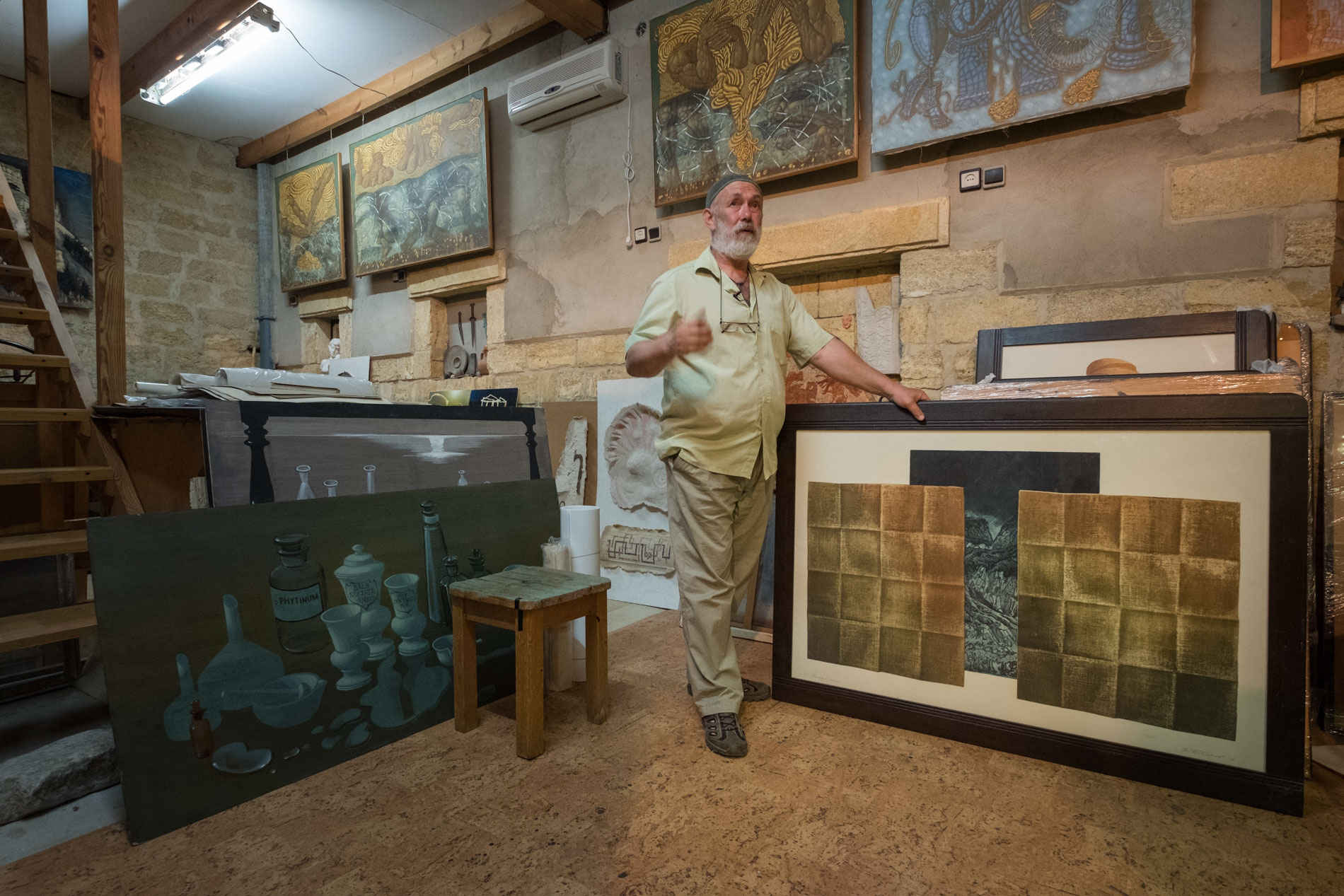
The Bakhtov couple artfully decorated the house on the inside. On the ground floor, there were first exhibitions of artists. The room was afterwards converted into a kitchen: in the center there is a pear-shaped tank just like a well in traditional Greek houses, and the stone walls were decorated with the paintings by artists. The second floor is Volodymyr’s workshop. For example, here is a machine for etching, as well as a collection of graphic works and photos of lend-art works. It is an art type, that involves natural objects as a material. It is this studio where Volodymyr and his wife organize exhibitions and hold master classes, introducing guests to the mystical culture of Olbia and contemporary art. For example, they once held an action with children and painted large (1.5 x 2.5 m) paintings, which were then sold in Mykolaiv to help the patients of the ophthalmology center.
Etching
A kind of engraving on metal.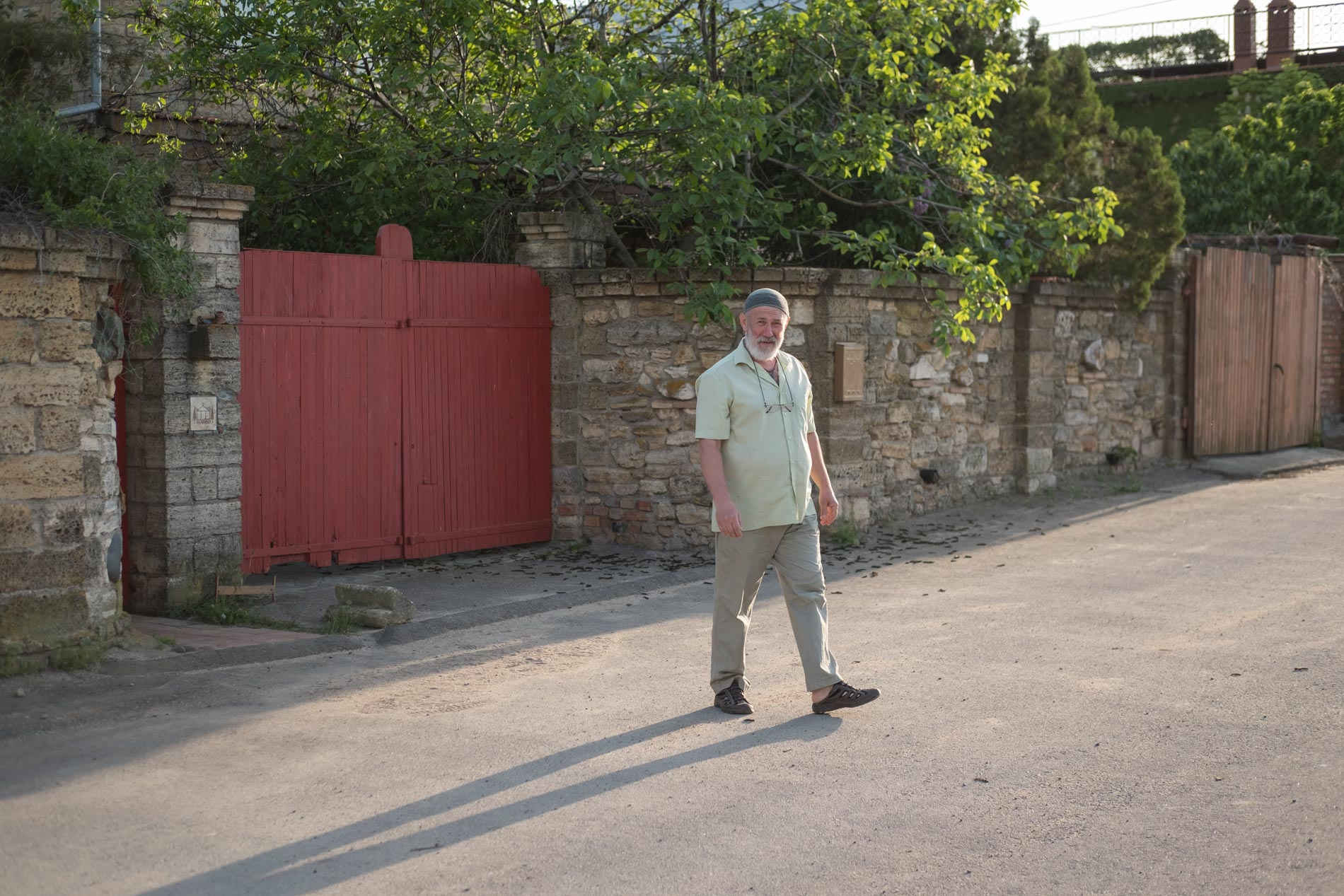
Instead of the usual for the Ukrainian village gardens the Bakhtov couple decided to organise their own park:
— We had an initial idea to make the park like the Pompeii yards: they necessarily surrounded the park on all sides with a colonnade. Well, this fantasy is not affordable, but we achieved something similar.
The hundred-meter park section is divided into three terraces: the lower one is for trees, the middle one is for shrubs, and the upper one is for herbs. The couple suggests that their park is the largest in Parutyne. There are rare species of plants here, that they brought from different nature reserves of Ukraine: sumac, barberry, wild salvia from the mountains, western maclura, almonds etc. Volodymyr calls his park a half-wild, saying that it is more interesting when everything grows by itself based on the principle of ‘got accustomed — didn’t get accustomed’. Volodymyr and Tetiana do not use any chemicals for plant care.
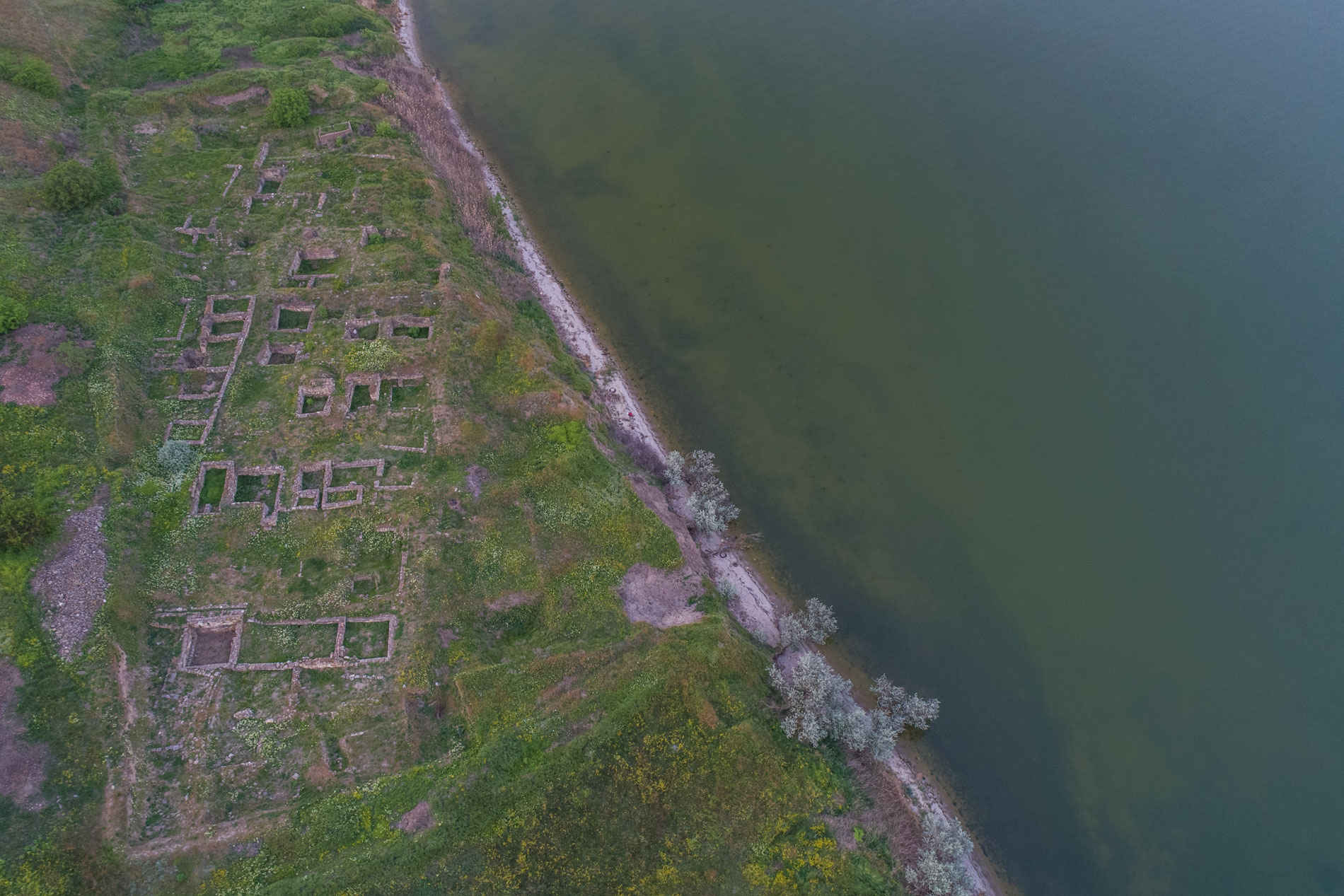
Preserve Olbia
Settling in the outskirts of an ancient polis, the Bakhtov couple began to immerse itself into the long history of Olbia. Volodymyr points out that this location is equally interesting to historians and artists:
— For explorers, it (Olbia — ed.) is a very informative territory, and for me it is a kind of endless book.
Volodymyr can talk about Olbia longand admiringly. The man reminds that it is this city, which began in the VI century BC. It was the cradle of mathematics and philosophy, and the achievements of the local people, including artists, craftsmen and poets, made it a kind of cultural heartland. By the way, exactly due to the efforts of Volodymyr, one of the streets of Olbia was renamed in honor of Herodotus, who in the 4th century BC. had visited this city-state. Volodymyr says that the former name — ‘Rybalchyi lane’ (Fisherman’s lane) — is nice, but ‘Herodotus Street’ is still better.
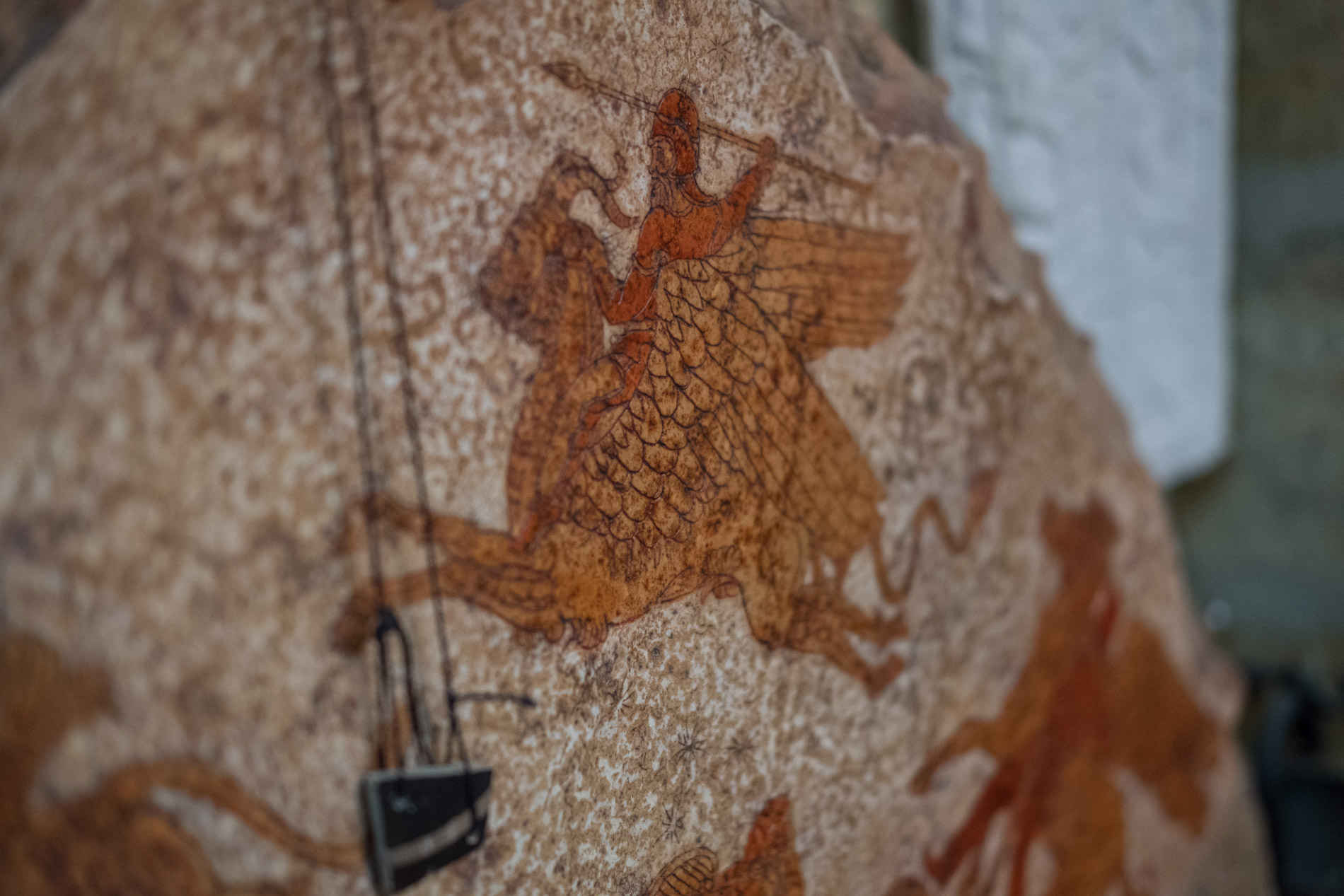
Volodymyr calls Olbia a perfect historical monument. The point is that the favorable location of the city kept it from being destroyed. Whereas the buildings of other ancient settlements were erected on the rocky shores and thus eroded, here everything remained as it was until the Middle Ages. Volodymyr advises tourists and researchers to come here to hunt for the visual credibility — the authentic appearance of columns, temples and other buildings:
— Everything has been preserved here every hundred years.
The situation changed crucially during the Soviet era, when most of the valuable Olbian artifacts were exported to Ukrainian or foreign museums, or transferred to private collections. The Bakhtov couple says that from time to time the villagers noticed illegal archaeologists who plundered a rich cultural layer. They took out remains of human activity from the soil: coins, fragments of buildings and ceramics. And, according to Volodymyr, it is extremely deep here — up to eight meters. For comparison, the size of the cultural layer in Khersones reaches three to four meters, and in Parthenon, which is erected on rocky ground, it is completely absent. The man says that on the favorable clay soils of Olbia this layer grew 70 to 80 cm every 100–200 years.
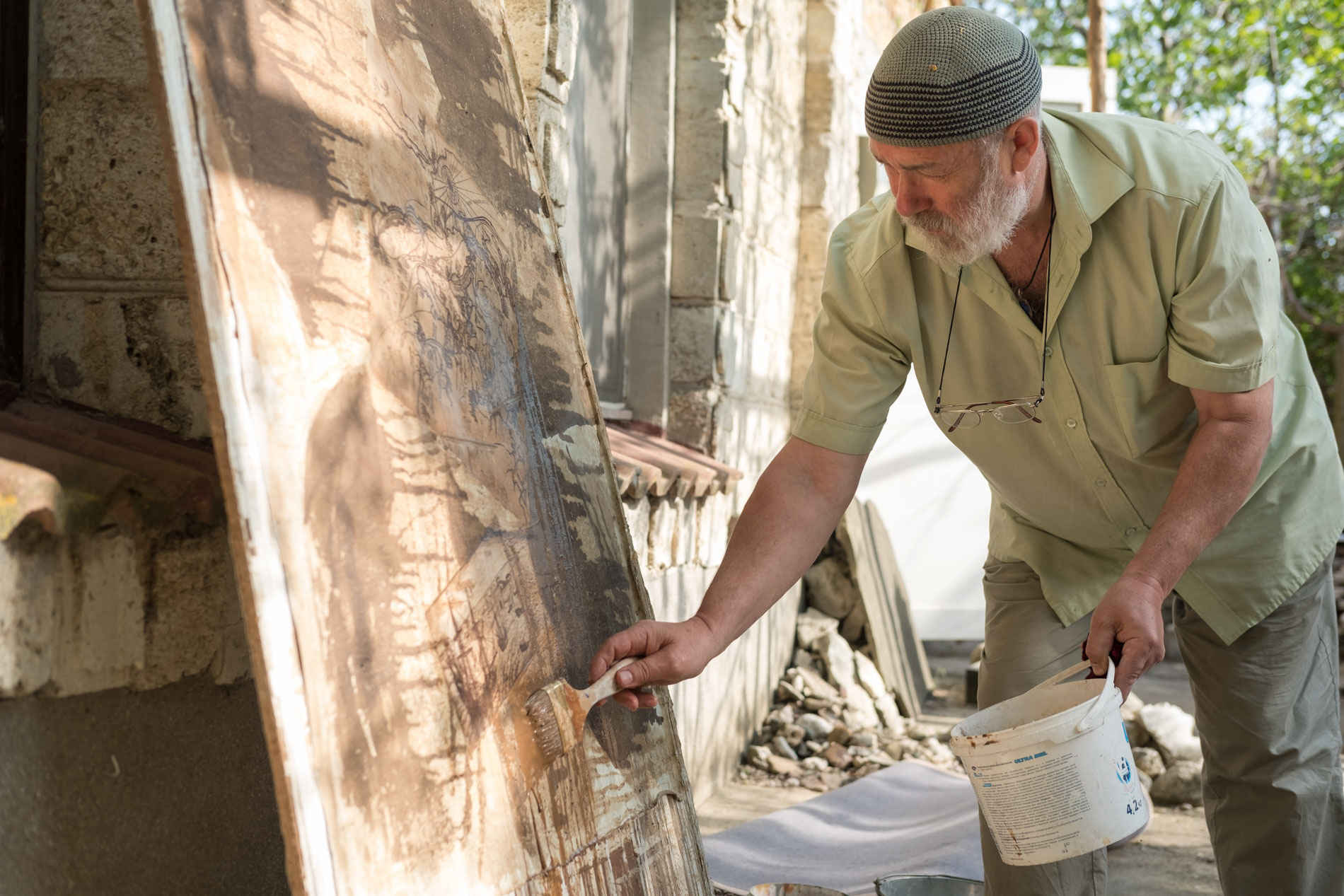
Overall, Tetiana and Volodymyr did a great deal to promote the reserve. They invited wealthy guests and potential investors, and were also developing the concept of a cultural center with archeological reconstructions of ancient cultures. Volodymyr participated in the restoration of the mounds of Yevrysyvii and Aretha. According to the artist, it was a project of world importance, since most of the mounds from the Altai to the Danube, except for Italian tombs, are destroyed today.
As the Bakhtov couple says, many projects to promote the reserve have unfortunately not been implemented. In their view, the greatest achievement is that they have started to protect it. However, spouses remain optimistic and do what they can on a daily basis. The artists indicate that today in the half-wild reserve they have the space, peace and inspiration needed to work.
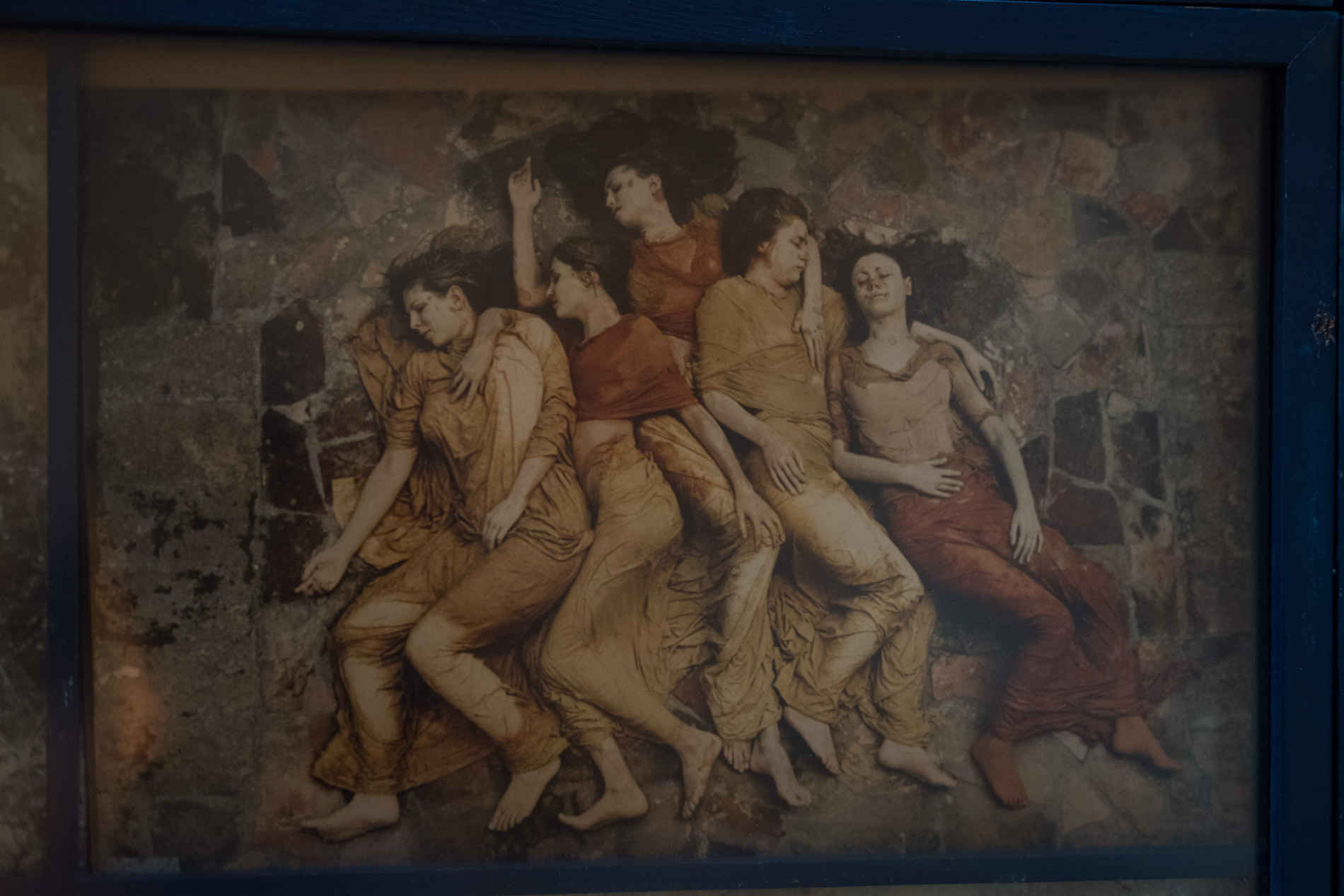
Heliograffiti
In the vast expanses of the ancient city Volodymyr and Tetiana discovered a new direction — spatial art, or ‘land art’. The couple notes that it was the start of their new creative biography. They say that in this direction they have already declared themselves:
— In the south, we are probably the only ones who are involved in the land art so comprehensively.
The Bakhtov couple uses the archaeological landscape of ancient Olbia for their projects. Volodymyr says that there is room to disperse, as there are 36 hectares of available space. The man recalls his first works on restoring ancient Greek buildings. They were constructed of the fragments of constructions and ceramics.
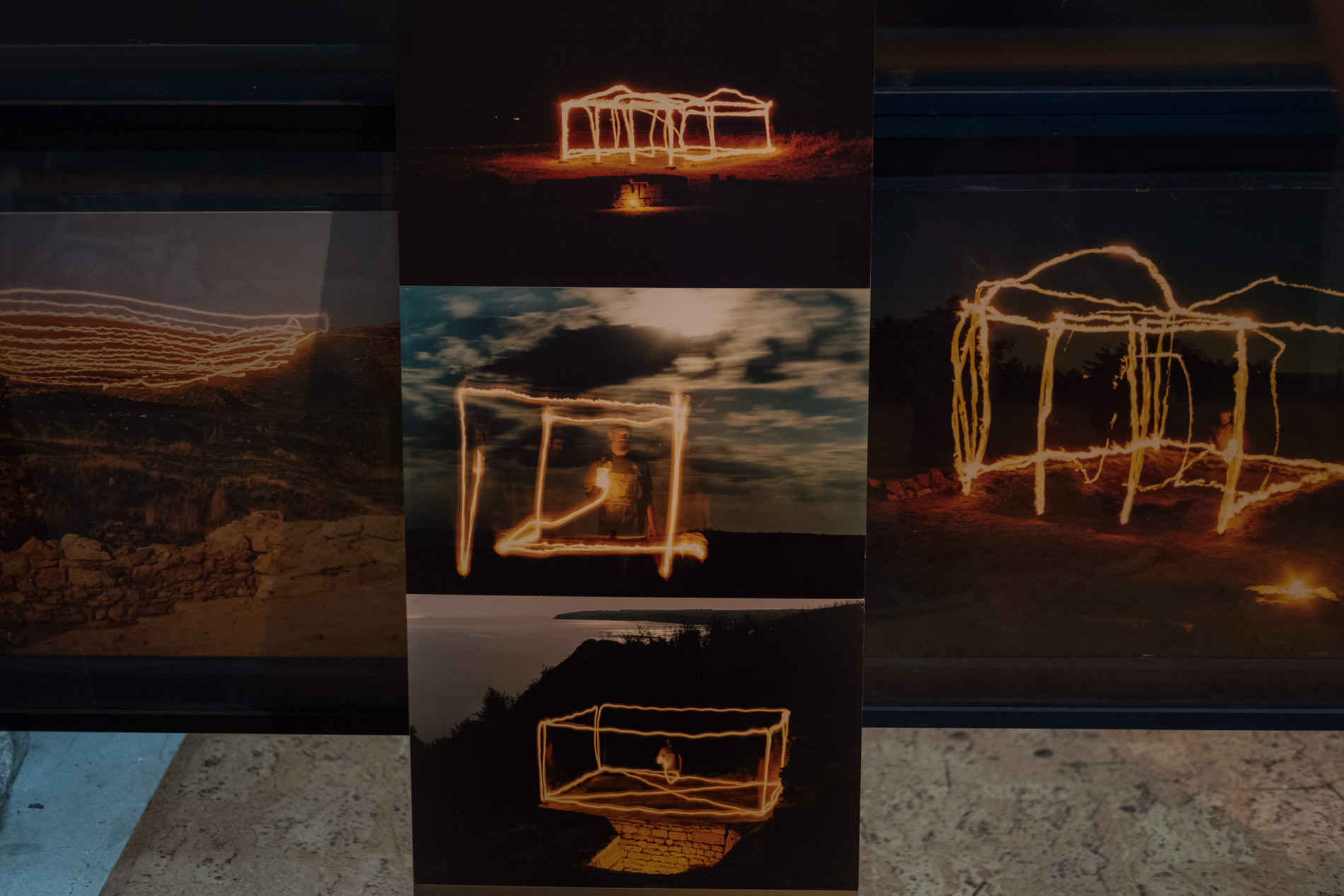
The artist says that recently, their land art is more related to photography. The point is that many of the artworks by the Bakhtov couple were performed in heliograffiti technique. It is a reconstruction of certain objects by fire. Volodymyr draws silhouettes of the missing Olbian structures with a burning torch, and Tetiana shoots this process on camera, using the possibilities of the long exposure (from 1 to 20 minutes). Such shooting, according to the man, contradicts the tendency of the maximum reduction of time for production or processing of any product, including a photo. This, in his opinion, gives an interesting and valuable artistic result. Among the works of the artists are the reconstruction of the mound of Zeus, the temples of Aphrodite, Apollo and the Olbian stoa, a traditional ancient Greek covered colonnade.
Another feature of the heliograffiti by the Bakhtov couple is the progress with the perspective. Volodymyr explains that he is trying to move away from the usual way of drawing on a plane, so he reproduces the ancient structures around him. The artist calls this technique ‘three-dimensional drawing’ and says that it is his invention.
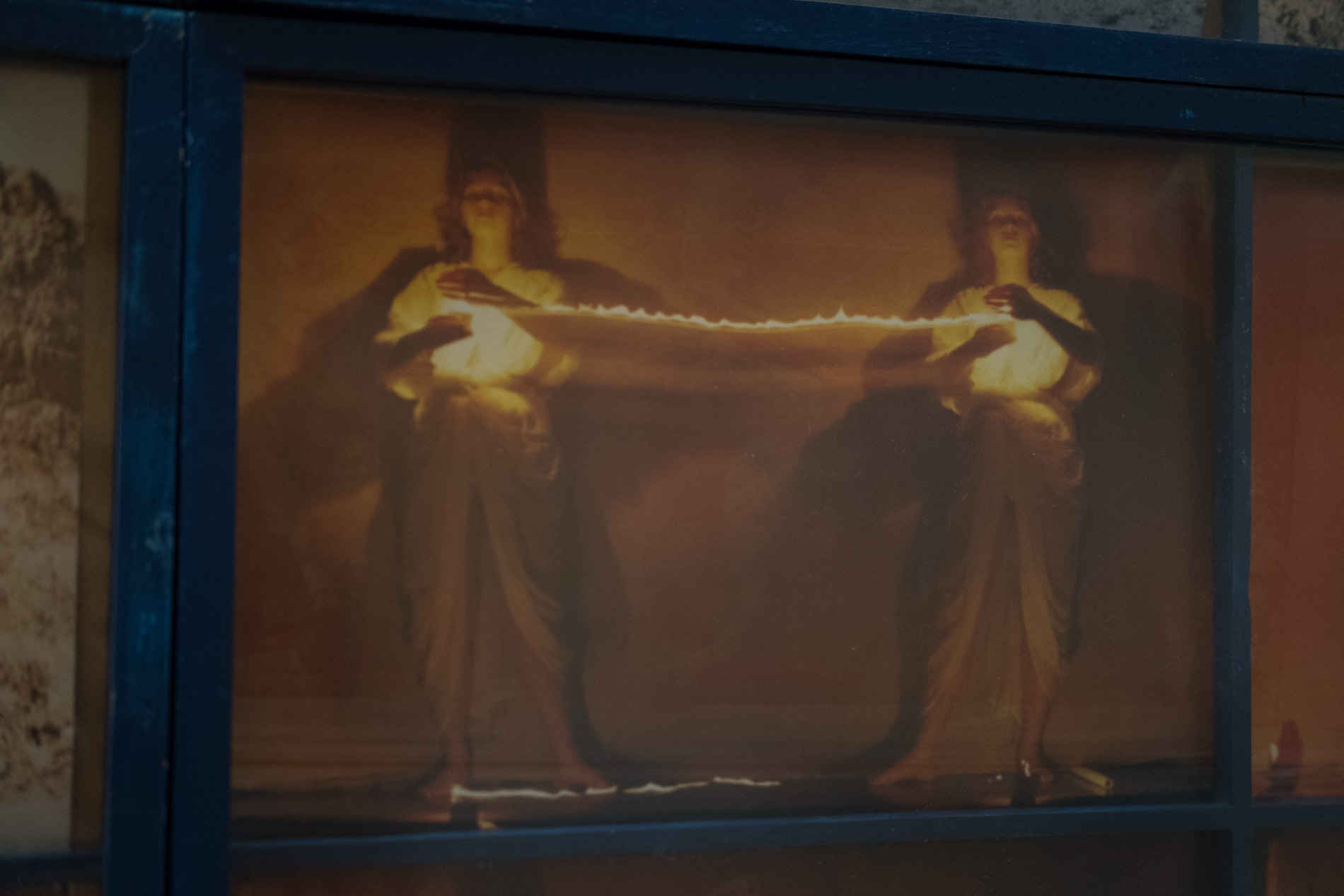
The historical reconstruction of the Bakhtov couple is not limited to architecture. On the territory of the historical-archeological reserve, artists perform and shoot scenes from the life of the Olbians or the ancient myths. The actors are archeological students, who come here to practice. Tetiana and Volodymyr produce clothes according to the ancient models especially for these performances. And also they put clay of seven colours on the bodies of the actors and the fabric of their costumes. Because of this, they look like ancient statues that have come to life.
Shots of such reconstructions were used in the documentary ‘Symbols of Olbian Space by Volodymyr Bakhtov’. According to the artist, this is a remake of the movie ‘Olbia with Volodymyr Bakhtov’, which he and director Volodymyr Zavizion had completed twenty-three years ago. Volodymyr says they have only changed a little. They have improved the quality and added a few frames. The movie ‘Symbols of Olbian Space…’, which Volodymyr is talking about, does not contain any text at all. According to the Bakhtov couple, such a retro tape format is its main value:
— There is something magical that is not present in contemporary films.
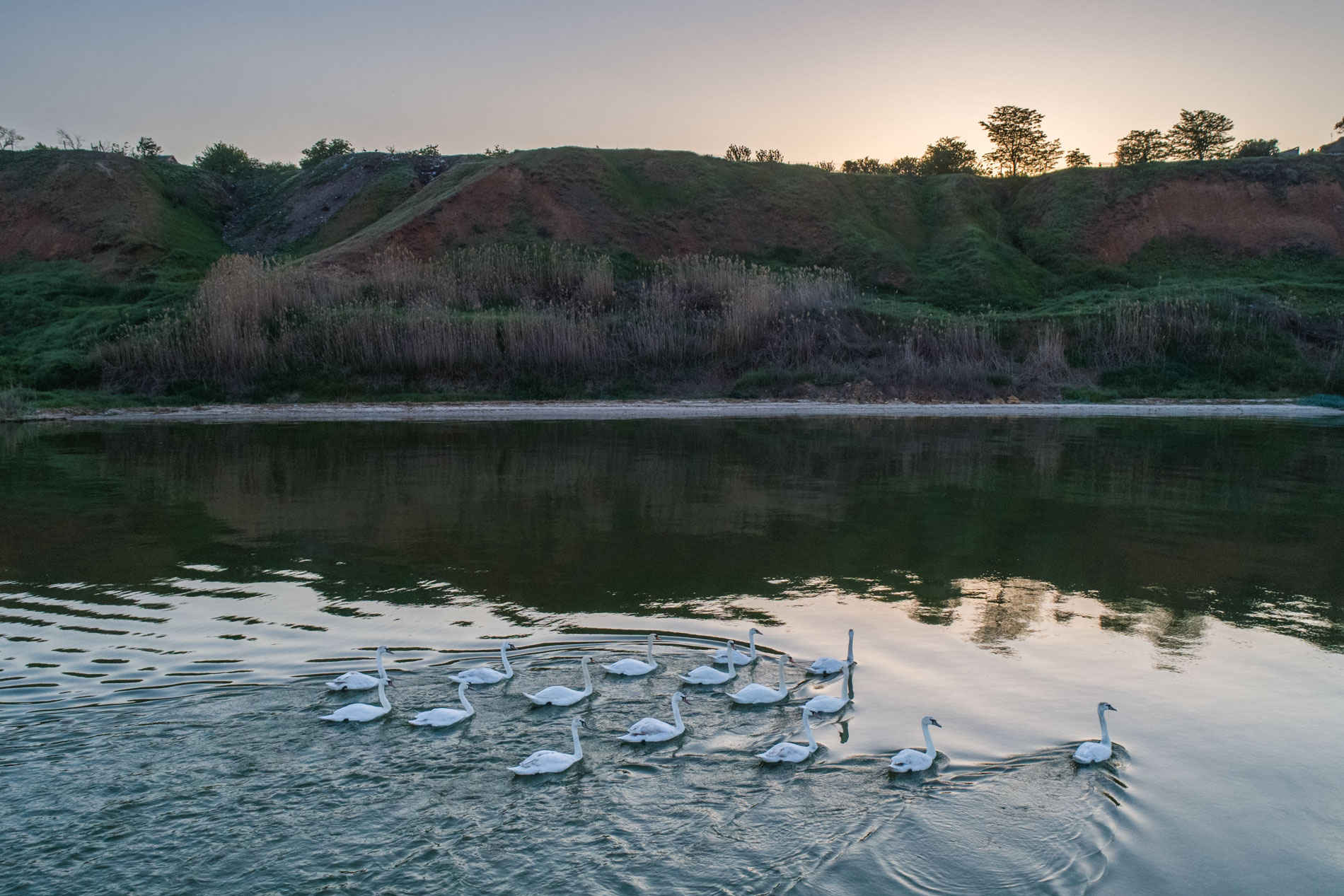
The spouses also recall attempts to make feature films. Tetiana told that they had organized a grotesque auction of plants at night: they numbered and signed all the herbaceous plants in the park and then filmed their sale.
However, obviously, the most important work of art of Tetiana and Volodymyr is their home workshop. It embodies the life experience and philosophy of the couple, becoming a place where modernity is intertwined with the culture of ancient Olbia.

